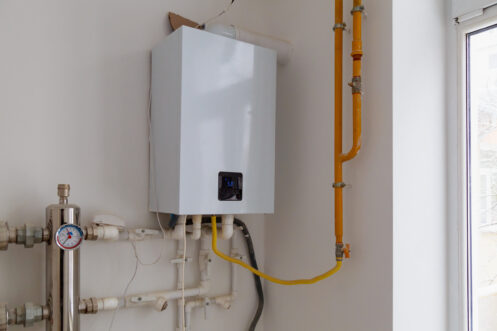Professional Advice for Maintaining Your Home's Hot Water SystemCaring for Your Home's Hot Water System: Important Tips
Professional Advice for Maintaining Your Home's Hot Water SystemCaring for Your Home's Hot Water System: Important Tips
Blog Article
Do you find yourself hunting for selective information on Water Heater Maintenance Tips You Can't Afford to Forget?

Hot water is vital for day-to-day comfort, whether it's for a rejuvenating shower or cleaning dishes. To guarantee your warm water system runs efficiently and lasts longer, normal upkeep is essential. This post gives practical ideas and understandings on how to maintain your home's warm water system to stay clear of disruptions and costly repair services.
Intro
Maintaining your home's hot water system may appear overwhelming, but with a few basic actions, you can guarantee it operates smoothly for many years to find. This overview covers every little thing from understanding your hot water system to DIY maintenance ideas and recognizing when to call professional help.
Significance of Preserving Your Warm Water System
Normal upkeep not just expands the lifespan of your hot water system but also ensures it operates effectively. Overlooking maintenance can lead to lowered performance, greater power bills, and even early failing of the system.
Indications Your Hot Water System Demands Upkeep
Understanding when your warm water system requires interest can avoid major concerns. Keep an eye out for indications such as inconsistent water temperature, weird sounds from the heating unit, or corroded water.
Purging the Water Heater
Flushing your hot water heater removes sediment buildup, boosting performance and lengthening its life.
Monitoring and Changing Anode Rods
Anode rods avoid corrosion inside the tank. Evaluating and changing them when worn is essential.
Facility Concerns Needing Expert Assistance
Instances consist of major leakages, electrical troubles, or if your hot water heater is regularly underperforming.
Regular Expert Maintenance Perks
Specialist maintenance can include thorough assessments, tune-ups, and guaranteeing compliance with safety and security requirements.
Examining and Readjusting Temperature Setups
Changing the temperature level settings ensures ideal performance and security.
DIY Tips for Maintenance
You can perform a number of upkeep tasks on your own to keep your warm water system in leading condition.
Looking for Leaks
Frequently examine pipelines and connections for leaks, as these can cause water damage and greater expenses.
Understanding Your Hot Water System
Prior to diving into upkeep jobs, it's useful to comprehend the standard components of your warm water system. Typically, this includes the hot water heater itself, pipes, anode rods, and temperature level controls.
Monthly Upkeep Tasks
Normal monthly checks can assist capture small issues prior to they escalate.
Checking Pressure Alleviation Valves
Testing the stress relief valve ensures it works appropriately and avoids extreme stress buildup.
Protecting Pipelines
Shielding hot water pipes decreases warm loss and can conserve energy.
When to Call an Expert
While DIY maintenance is valuable, some issues need professional proficiency.
Final thought
Normal upkeep of your home's warm water system is important for effectiveness, durability, and expense financial savings. By adhering to these suggestions and understanding when to look for professional assistance, you can make sure a reliable supply of hot water without unanticipated disruptions.
How to Maintain an Instant Hot Water Heater
Before tinkering with your hot water heater, make sure that it’s not powered on. You also have to turn off the main circuit breaker and shut off the main gas line to prevent accidents. Also turn off the water valves connected to your unit to prevent water from flowing into and out of the appliance. 2. When you’re done, you have to detach the purge valves’ caps. These look like the letter “T” and are situated on either side of the water valves. Doing so will release any pressure that has accumulated inside the valves while at the same time avoid hot water from shooting out and burning your skin. 3. When the purge valves’ caps are removed, you have to connect your hosing lines to the valves. Your unit should have come with three hoses but if it didn’t, you can purchase these things from any hardware or home repair shops. You can also get them from retail stores that sell water heating systems. Read the user’s manual and follow it to complete this task properly. When the hosing lines are connected, open the purge port’s valves. 4. You should never use harsh chemical cleaners or solutions when cleaning your unit. Make use of white vinegar instead. It should be undiluted and you’ll probably use about 2 gallons. 5. Now flush your water heater. This task should probably take about 40 minutes. We can’t give you specific directions for this because the procedure is carried out depending on the type, model and brand of your heater. With that being said, refer to the user’s manual. 6. When you’re done draining the unit, you have to turn off the purge port valves again. Remove the hosing lines that you earlier installed on each of the water valves. Put the valve caps (purge port) back in their respective places and be very careful so as not to damage the rubber discs that are found inside these caps. 7. Now that everything’s back in place, check your user’s manual again to find out how to reactivate your water heating system. 8. Once it is working, turn one of your hot water faucets on just to let air pass through the heater’s water supply pipes. Leave the tap on until water flows smoothly out of it. https://www.orrplumbing.com/blog/2014/september/how-to-maintain-an-instant-hot-water-heater/

As a fervent reader about Tips on Maintaining a Water Heater, I assumed sharing that editorial was smart. For those who enjoyed reading our blog post kindly do not forget to pass it around. Many thanks for taking the time to read it.
Click Here Report this page